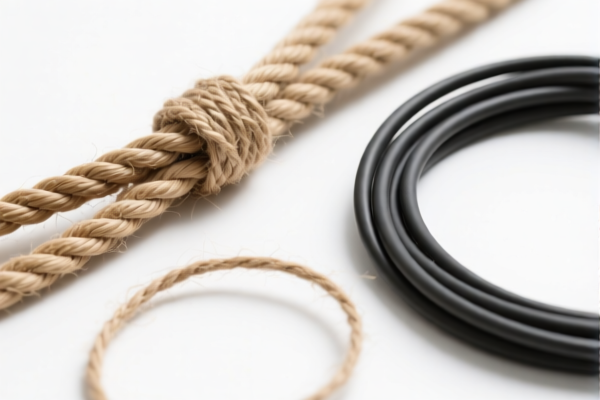| HS Code | Official Doc | Tariff Rate | Origin | Destination | Effective Date |
|---|---|---|---|---|---|
| 5404198080 | Doc | 61.9% | CN | US | 2025-05-12 |
| 5405006000 | Doc | 60.8% | CN | US | 2025-05-12 |
| 5609001000 | Doc | 57.9% | CN | US | 2025-05-12 |
| 5609002000 | Doc | 55.0% | CN | US | 2025-05-12 |
| 5609003000 | Doc | 59.5% | CN | US | 2025-05-12 |
| 5609004000 | Doc | 58.9% | CN | US | 2025-05-12 |
| 5607210000 | Doc | 55.0% | CN | US | 2025-05-12 |
| 5607411000 | Doc | 57.7% | CN | US | 2025-05-12 |
| 5607413000 | Doc | 59.0% | CN | US | 2025-05-12 |
| 6310102030 | Doc | 37.5% | CN | US | 2025-05-12 |
| 7326190010 | Doc | 82.9% | CN | US | 2025-05-12 |
| 7326190080 | Doc | 82.9% | CN | US | 2025-05-12 |




BINDING STRAP HS Code Classification Analysis
Based on the provided descriptions, here's a breakdown of potential HS codes for "BINDING STRAP," along with explanations and recommendations. Please note that the precise HS code depends heavily on the material composition, width, and intended use of the strap.
Understanding HS Code Structure:
- First 2 Digits (Chapter): Broadly categorize the product type.
- First 4 Digits (Heading): More specific classification within the chapter.
- First 6 Digits (Subheading): Further refinement of the product.
- Further Digits: Specific product variations and details.
Here's a detailed analysis of the provided HS codes, grouped by potential relevance, along with recommendations:
1. Synthetic Textile Materials (Chapter 54 - Textiles)
These codes are most relevant if your binding strap is made from synthetic fibers like polyester, nylon, polypropylene, etc.
- 5404.19.80.80: Synthetic monofilament of <67 decitex> or more...strip and the like...Other: Other Other. This is a strong contender if the strap is a single filament or narrow strip of synthetic material. Decitex is a unit of yarn fineness.
- 5405.00.60.00: Artificial monofilament of <67 decitex> or more...strip and the like...Other. Similar to 5404.19.80.80, but for artificial (regenerated) fibers like rayon or viscose.
- Recommendation: Carefully determine if the material is synthetic (produced chemically) or artificial (regenerated from natural sources). The width and cross-sectional dimension are also important.
2. Articles of Yarn, Strip, etc. (Chapter 56 - Textile Products)
These codes apply if the strap is made from yarn or strip of the materials covered in Chapter 54.
- 5609.00.10.00: Articles of yarn, strip or the like...Of cotton. Only applicable if the strap is made from cotton yarn or strip.
- 5609.00.20.00: Articles of yarn, strip or the like...Of vegetable fibers, except cotton. Applicable for straps made from other vegetable fibers like jute or hemp.
- 5609.00.30.00: Articles of yarn, strip or the like...Of man-made fibers. A good option if the strap is made from synthetic fibers.
- 5609.00.40.00: Articles of yarn, strip or the like...Other. A catch-all for materials not specifically listed.
- Recommendation: If your strap is a woven or braided product made from Chapter 54 materials, these codes are likely more appropriate than Chapter 54 itself.
3. Twine, Cordage, Ropes and Cables (Chapter 56)
These codes are relevant if the strap functions as a binding agent similar to rope or twine.
- 5607.21.00.00: Twine, cordage, ropes and cables...Of sisal or other textile fibers of the genus Agave: Binder or baler twine. Specific to sisal or agave fibers.
- 5607.41.10.00 & 5607.41.30.00: Twine, cordage, ropes and cables...Of polyethylene or polypropylene: Binder or baler twine. Good options if the strap is made from polyethylene or polypropylene.
- Recommendation: If the strap is used for tying or bundling, these codes should be considered.
4. Other Codes (Less Likely)
- 6310.10.20.30: Used or new rags, scrap twine, cordage, rope and cables...Sorted: Other Other. Only applicable for recycled or scrap materials.
- 7326.19.00.10 & 7326.19.00.80: Other articles of iron or steel: Forged or stamped, but not further worked. Only applicable if the strap is made of iron or steel.
Important Considerations & Recommendations:
- Material Composition: The primary material of the strap is the most important factor.
- Width & Cross-Section: The dimensions of the strap can influence the classification.
- Intended Use: How the strap is used (binding, tying, bundling, etc.) is also important.
- Certification: Depending on the end use of the binding strap, you may need to provide certifications related to material safety, strength, or flammability.
- Tax Rates: Be aware of the changing tax rates (especially the 2025.4.2 changes) and factor them into your cost calculations.
- Consult with a Customs Broker: For a definitive classification, it is highly recommended to consult with a licensed customs broker. They can review the specific details of your product and provide accurate guidance.
Disclaimer: This information is for general guidance only and does not constitute professional customs advice. HS code classification is complex and subject to interpretation.
Customer Reviews
I found the explanation of the 5607210000 code for sisal or agave fibers very useful. The detailed analysis helped me choose the right code for my product.
The breakdown of the HS code 6310102030 for used or new rags was exactly what I needed for my recycling project. Great resource!
The information was helpful, but I found the section on Chapter 73 a bit confusing. Still, it gave me a good starting point for research.
The section on Chapter 56 was very informative, especially for straps made from man-made fibers. The 5609003000 code was exactly what I needed.
I was looking for HS codes for binding straps made from polypropylene, and the 5607411000 code fits perfectly. Thanks for the detailed explanations!